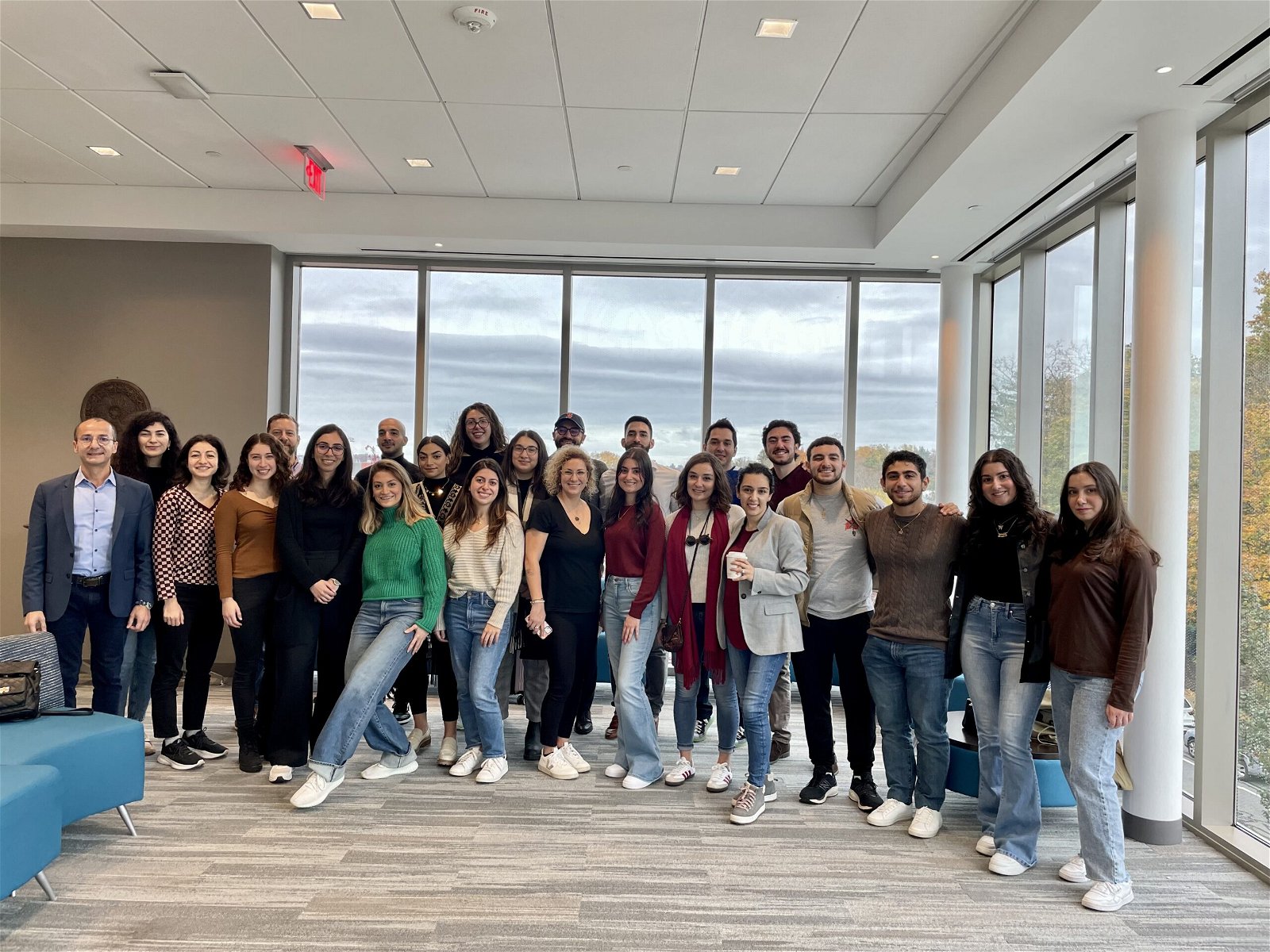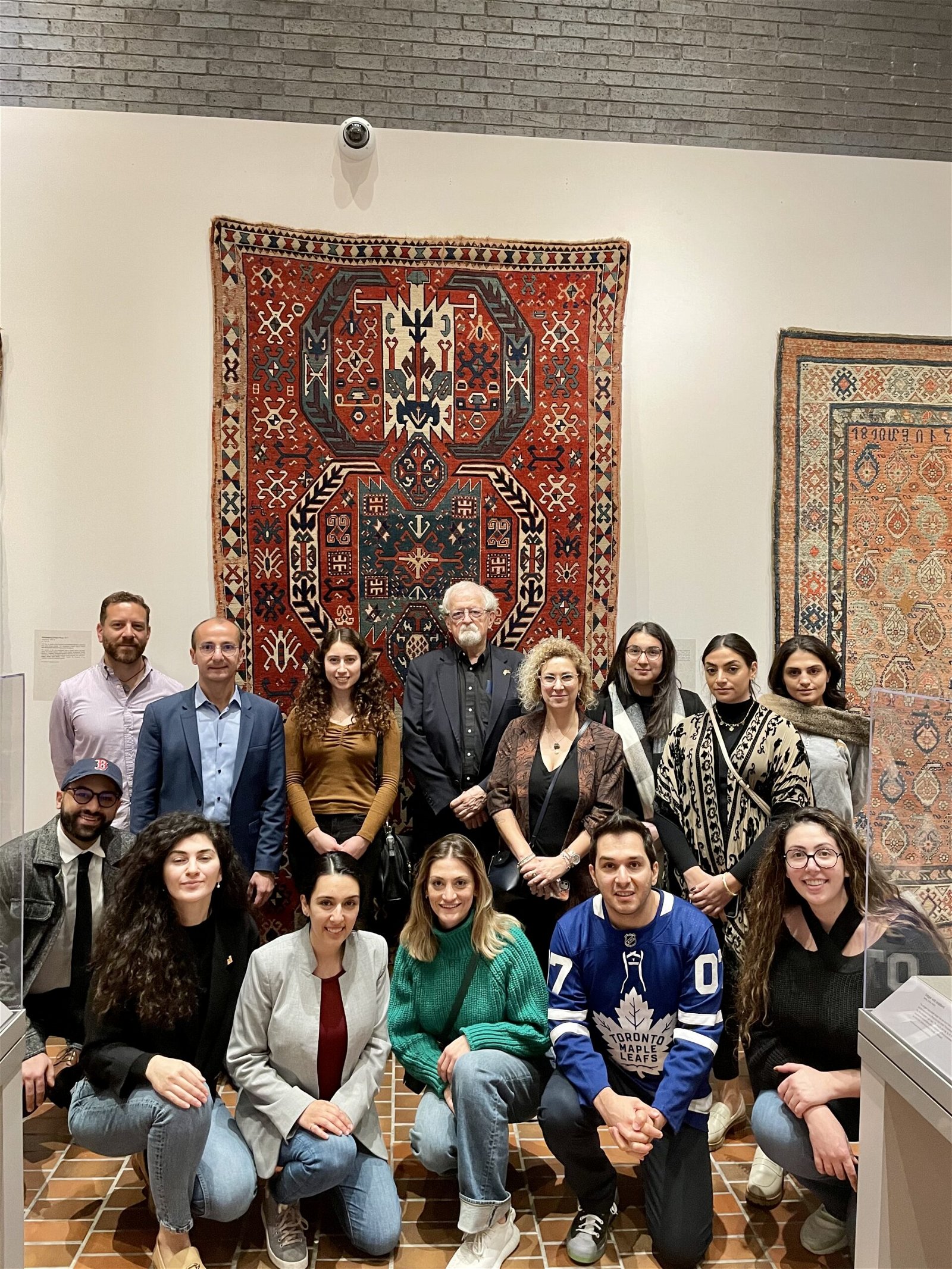
To reflect on this weekend, perhaps it is easiest to start backwards. In his opening remarks during the Artsakh roundtable discussion, Dr. Khatchig Mouradian stated (and I’m paraphrasing from the original Armenian), “For a people who scream against denial, we practice denial ourselves.”
Denial is often touted as the first in the five stages of grief. Such is the Armenian story. We are no strangers to the tower. Artsakh itself is a strange compounding of grief – Arts akh, a collective exclamation. But most therapists will tell you that we do not move through this cycle linearly. Even our roundtable wasn’t round.
At first, I just listened. I watched the cohort – spanning ages, occupations, languages, travels, and personal memories and ties to this storied land – fill the room with their pain, their fears and their ideas. Our generation was born with an independent Artsakh, and now, we reckon with the loss of our twin.
Mouradian outlined that this is the fourth era of the modern Armenian nation – following the post-genocide, First Republic generation of the early 1920s; the rupture of Soviet silencing in 1965; and the Artsakh liberation movement of the early 1990s. At each juncture stood unwavering souls – perhaps few in numbers, but strong in will, in vision, in spirit.
Like all great discussions, there was no consensus on where to go – but plenty of queries were posed. These parting questions have traveled back with us to our diasporan homes. From this space, I reflect now.
But I could have just as easily begun with the word(s). Ham-azk-ayin – “of one nation/peoples.” Retreat – “a solitary or communal experience; an act of moving back; (of an army) withdraw from enemy forces as a result of defeat.” The multiplicities within “retreat” reflect the nature of the workshops themselves, which began with the ear (music), through the eyes (photos) and on to the edges (poetry between empires).

Oud master Ara Dinkjian shared snippets of his personal record collection – vintage, rare and (almost) lost Armenian-American recordings. But before he shared the sounds of our burgeoning diaspora, Dinkjian began at the cusp of our rupture, with a 1908 recording of Arorn u Tatrakuh (“The plough and the turtledove”) by the founder of Armenian national music and personification of that collective akh: Komitas Vartapet.
This was followed up by a haunting rendition of “Krunk” with Komitas on piano, and his protégé Armenak Shahmuradyan on vocals. “Krunk” is a folk song that has become an anthem for the Genocide martyrs. But here, we heard a version recorded in 1914. The meaning of the crane song was not yet divorced from its birth.
Shahmuradyan’s singing was slower than many of the tune’s contemporary renditions. Dinkjian opined that this is an indication of how “Krunk” may have been performed originally, since it is among the oldest recordings we can find of it.
After this, we heard a dizzying assortment of classics by early Armenian-American musicians – most of them amateurs – providing a window into how a musical gathering at an Armenian home may have sounded in the early to mid-20th century. What a delight to hear that Dinkjian’s collection will be donated to the Library of Congress for all to listen and savor our collective musical heritage.
The next workshop was by Hrair ‘Hawk’ Khatcherian, a Canadian-Armenian photographer, by way of Lebanon. In 1993, Khatcherian was diagnosed with terminal cancer. He made a promise to God that, should he survive, he would dedicate his life to photographing Armenian churches and manuscripts. Like the bird of prey, he held on – and kept his word. Over the next three decades, he ventured to Western Armenia, capturing crumbling churches and moaning mountains, a century on from Medz Yeghern.
In the early 1990s, Khatcherian also documented the Artsakh liberation movement. With the help of a local videographer, these images were assembled into a film. We watched footage of soldiers, mere feet from blastings – Khatcherian in the trenches with them. In the captions, he signed his name ‘Hrair Hawk,’ after the call sign in Star Wars.
In the midst of tragedy, levity imbued into art – a recurring message, echoed by all the speakers, that everyone must do their part, however (seemingly) minute and trivial. In this way, we will build a rich archive of our culture, our art, our heritage – not just for ourselves and our posterity, but for the world over.
We watched interviews of freedom fighters before their martyrdom in the following months and years of the war. We followed along the journeys of local Artsakhtsis to the recent present – before September’s exodus into Armenia. As the credits rolled, the slanted text moved from bottom-up, like George Lucas’ opus. I then understood the multi-layers of this talk, “Artsakh: The Photographer’s Eye,” which was lifted from the title of Hrair Hawk’s book.
In the midst of tragedy, levity imbued into art – a recurring message, echoed by all the speakers, that everyone must do their part, however (seemingly) minute and trivial. In this way, we will build a rich archive of our culture, our art, our heritage – not just for ourselves and our posterity, but for the world over.
This sentiment was especially resonant in Dr. Arpi Movsesian’s presentation, which began with a question – why has no Armenian writer ever won the Nobel Prize in Literature? Again, the audience offered a multitude of answers – all valid – which were touched upon in the works she referenced, translated and contrasted.
“From Periphery to Center: The Armenian Literary Word Between Empires” felt like a sneak peek into one of Movsesian’s classes at the University of Notre Dame, where she teaches Slavic Studies. Movsesian brought to the fore groundbreaking Armenian texts, from Nahapet Kuchak’s medieval hayrens, to the pioneering feminist works of Shushanik Kurghinian and Silva Kaputikyan.
Her juxtaposition of Sayat Nova with Dante, Kaputikyan with Whitman, and the imagery of the spinning wheel – a common motif in the poems of Hovhannes Tumanyan and other Armenian writers – with the iconography of Gandhi and the Indian flag were novel readings of Armenian text, breaking it out of the confines of peripheral and lunging it into a center. Perhaps not the center, but a more visible lens.
Movsesian also noted the lack of engagement with non-Russian texts and writers in the realm of Soviet Studies, and how this has disadvantaged Armenian voices among many others in the colonial “periphery.” In the end, we were given worksheets – “homework,” the professor chuckled – to place ourselves in the role of translator, to flex that discerning eye ourselves. Thus, the lesson was left open-ended, for our hands to finish the chapter.
Over the years, attending many of these conferences, retreats and events, I’ve learned that there are no easy ways to digest and process learning, especially when that learning involves action.
A key takeaway expressed by all the workshop leaders, and many of the participants, was that we do not know ourselves – our history, our culture, our literature. Armenians are not the center of the world. A sobering truth, swallowed grudgingly. But nor should we try to be. The binaries of periphery and center – colonizer and colonized – oppressor and oppressed – winner and loser – have done us little good and much harm.

As Armenians, particularly in diaspora, many of us grow up with the notion that we are underdogs. Or, in the crass language of our genocidaires, the “leftovers of the sword.” To that, I say, as I munch on last night’s pizza slice – that this language can also empower us. Leftover – meaning “residue,” but also “survivor” and “legacy.”
After the workshops, on Saturday evening, a small group of us decided to drive to Walden Pond, where transcendentalist Henry David Thoreau spent two years of his life, living alone in a small cabin he built for $28.12. Thoreau was propelled by the philosophy that man needed to co-exist with(in) nature, to live deliberately and simply, in a state of self-reliance.
His rugged individualism stands as a microcosm of this country – the big dog of modern history. As tourists flock to the home of a man who derived peace and wisdom from stolen goods (of the Algonquin tribes), my mind turned again to Artsakh. What kind of legacy will we leave behind? What will this fourth era in the modern Armenian history tome look like?
Khatcherian’s photos captured the devastating destruction of Western Armenia. For the first time in recorded history, Artsakh is devoid of its indigenous Armenian population. What awaits the fate of this ancient land will be no less haunting and frightening.
Now is not the time to turn away from the sword. Man’s most ancient tool is his tongue. Let us fashion scalpels out of pens. Yes, we have lost the battle, but we will not retreat. We are here and ready to hold down the fort – together.


Be the first to comment